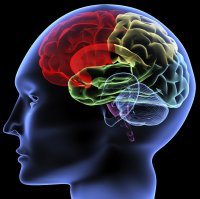 Brain trauma occurs nearly once every sixteen seconds in the United States. About thirty thousand people each year are hospitalized for other forms of cerebral accidents and diseases like multiple sclerosis and cerebral palsy. After a neurological trauma or event, both the muscular system involving eye movement and the system that regulates focusing can be affected as the flow of input from the brain is altered or halted. This can lead to a variety of symptoms, some more apparent than others.
Brain trauma occurs nearly once every sixteen seconds in the United States. About thirty thousand people each year are hospitalized for other forms of cerebral accidents and diseases like multiple sclerosis and cerebral palsy. After a neurological trauma or event, both the muscular system involving eye movement and the system that regulates focusing can be affected as the flow of input from the brain is altered or halted. This can lead to a variety of symptoms, some more apparent than others.
Visual symptoms commonly associated with acquired brain injury are:
- Blurred vision
- Sensitivity to light, glare sensitivity
- Reading difficulties; words appear to move
- Comprehension difficulty
- Attention and concentration difficulty
- Memory difficulty
- Double vision
- Aching eyes
- Headaches with visual tasks
- Inability to maintain visual contact
People with brain injury often have difficulties with:
- Eye tracking ability
- Difficulties with shifting gaze quickly from one point to the other
- Focusing
- Eye alignment
It is important to understand the necessity for special testing following a head trauma where these symptoms are present. A routine examination, while checking for sharpness of vision, does not provide information about the neurological system responsible for muscular control and focusing. Additional testing, such as a visual field test, is usually indicated to ensure that the "visual pathway" along the optic nerve has not been affected by the trauma.
There are many types of visual field losses that can occur. A common effect of brain trauma is the loss of one's visual field or our ability to see to the side. This is especially common after strokes. If the back portion of the brain is damaged on only one side, a loss of visual field occurs to the opposite side in both eyes. Patients often don't notice that the problem is occurring in both eyes.
With loss of visual field, patients frequently bump into objects and easily trip or fall over objects in their field loss. Public places may become quite difficult to navigate, because people and objects suddenly appear from the blind side. Anxiety is common as patients even become reluctant to leave their homes. Additionally, the loss of visual field may also cause difficulty when reading, causing patients to skip or mispronounce words.
Many patients with eye problems due to head trauma can be visually rehabilitated. The first step in this process is having a low vision rehabilitation examination. Depending on the type of problem, special glasses or lenses, magnifiers, telescopes and vision rehabilitation with an occupational therapist may be prescribed.
